Are you ready to grow your own delicious strawberries in Florida’s climate? Planting strawberries in the Sunshine State can be an easy and rewarding experience. However, it is important to understand when and how to plant them in order for your strawberry crop to thrive. In this blog post, we will explore the best time of year for planting strawberries, tips on fertilizing soil, common pests that should be prepared for, and more! Whether you’re a beginner or experienced gardener looking to reap the bounty of sweet succulent berries from your home garden, read on as we take a look at everything you need to know about growing delicious strawberries successfully in Florida.
What are the Benefits of Strawberries?
Strawberries are incredibly nutritious and can offer a range of health benefits. They are an excellent source of vitamin C, manganese, folate (vitamin B9), potassium, dietary fiber, magnesium, and other important vitamins and minerals. In addition to being packed with antioxidants like polyphenols, flavonoids, and ellagic acid that help protect the body from oxidative damage, strawberries are also a source of anti-inflammatory compounds. Consuming them can help reduce inflammation in the body and may even promote healthy blood pressure levels. [1]
Strawberries have many other benefits too, including a protective effect against certain types of cancer. Studies have found that the high content of antioxidants and other compounds in strawberries may help reduce the risk of developing breast cancer, colon cancer, and other forms of cancer.
In addition, strawberries can promote healthy glowing skin. The high vitamin C content helps boost collagen production which can keep skin looking smooth and youthful. Eating a few strawberries each day can help protect the skin from oxidative damage and also reduce inflammation. [2]
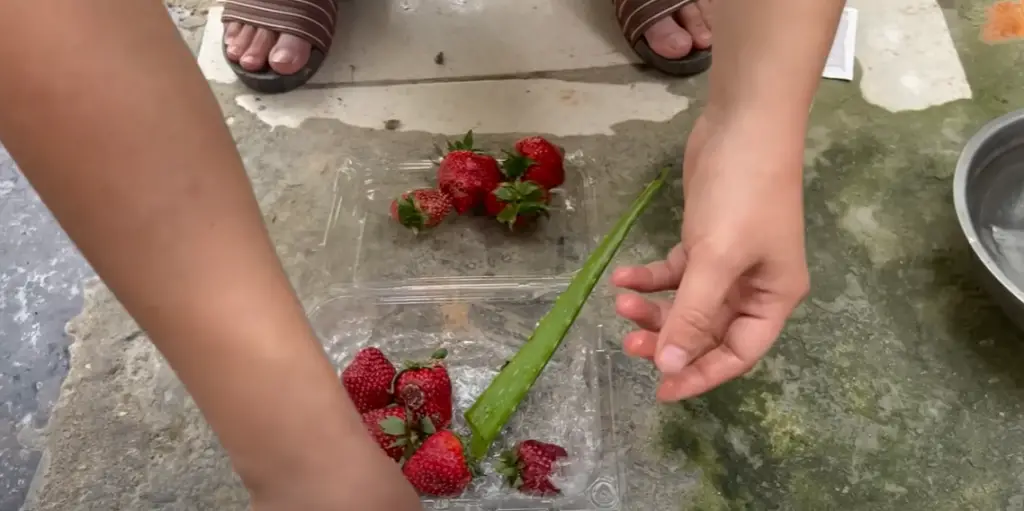
When to Plant Strawberries in Florida?
Planting strawberries in Florida is best done at the start of December. Planting should be done as soon as all danger of frost has passed and temperatures have stabilized above 60°F (15°C). That means that in most areas, planting will occur between mid-November to early January.
It can take up to 12 weeks for a strawberry plant to grow and bear fruit, so you should begin planting in early December for the best results. If strawberries are planted too late (in late January or later), they will not have enough time during the season to produce a full crop of berries.
Keep in mind that strawberry plants are perennials. That means that if you plant them at the right time, they will bear fruit year after year. This makes them an excellent choice for the Florida climate, as you will be able to enjoy your crop for many years to come!
If you are looking to introduce more diversity into your strawberry patch, consider planting different varieties of strawberries that thrive in the Florida climate. Some popular choices include ‘Earliglow’, ‘Seascape’, ‘Chandler’, and ‘Sweet Charlie’. Each of these varieties has different properties that make them well-suited for the Florida climate. For example, ‘Seascape’ is an excellent choice because it produces a large crop of flavorful berries that ripen early in the season. [3]

How to Grow Strawberries?
Growing strawberries is a rewarding and enjoyable experience. To get the most out of your strawberry plants, follow these simple steps:
- Choose the right location for growing strawberries. Look for an area that gets plenty of direct sunlight and has good-drainage soil with a pH above 6.0. Avoid planting in areas where water collects during rainy weather, as this can cause mold and mildew to form on the fruit.
- Prepare the soil for planting. Add organic matter such as compost or peat moss to enrich the soil, then till it up to a depth of 8–12 inches (20–30 cm). You can also add fertilizer if needed.
- Plant your strawberries in rows with 2-3 feet (0.6–1 m) of spacing between them. Plant the roots at least 6 inches (15 cm) deep in the soil and cover with 1-2 inches (2–5 cm) of soil. Water the plants well after planting and mulch around them to help retain moisture.
- Prune your strawberry plants regularly to promote good air circulation and to keep your plants healthy. Remove any dead or damaged leaves and stems, as well as runners from the previous year’s growth.
- Feed your strawberry plants with a balanced fertilizer every few weeks during the growing season to ensure they have all the nutrients they need for producing fruit.
- Water your strawberries regularly, making sure to provide at least 1 inch (2.5 cm) of water each week.
- Protect your strawberry plants from pests and diseases by inspecting them regularly and treating any problems as soon as they are spotted.
- Keep the area around the strawberry plants free of weeds, which can compete with the strawberries for nutrients and moisture.
- Harvest your strawberries when they are fully ripe and enjoy the sweet, juicy fruits of your labor!
By following these steps, you can have a bountiful harvest of delicious strawberries every year. With a little patience and care, you will be able to produce an abundance of this gorgeous fruit. For extra tips and advice on growing strawberries, be sure to speak with a local gardening expert or check out online resources dedicated to growing this delicious fruit. [4]
What are Best Strawberries to Grow in Florida?
Florida’s subtropical climate and unique soil composition makes it a great place to grow strawberries. With the right variety of strawberry, you can have plenty of delicious strawberries for eating, preserving or selling. To help you find the best strawberry varieties for your area, here are some suggestions:
Sweet Charlie
This variety is known for producing sweet berries with a classic strawberry flavor. The plants are resistant to many diseases, making them easy to grow in Florida. Sweet Charlie is an evergreen variety, meaning that it continues producing even during the winter months. They also produce large berries and have excellent shelf life when stored properly.
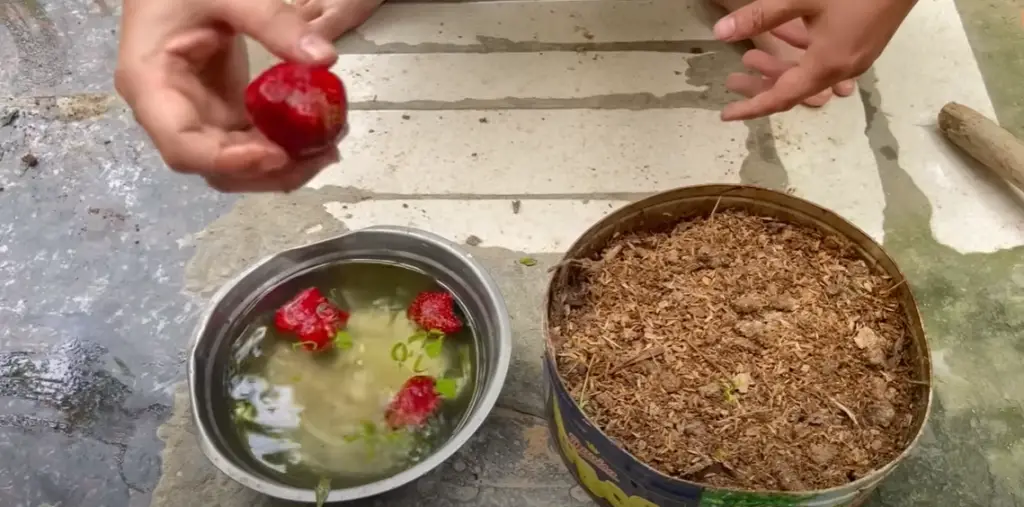
Camarosa
Camarosa strawberries are known for being sweet and juicy, making them a great choice for snacking. This variety produces large fruits that are easy to harvest and have an excellent shelf life when stored properly. Camarosa strawberries also grow well in Florida’s climate and soil conditions.
Chandler
Chandler is a versatile variety of strawberry, producing sweet berries with a classic flavor. The plants produce large fruits with an excellent shelf life when stored correctly. While they do not produce as much yield as some of the other varieties, Chandler strawberries are still a popular choice for home gardeners in Florida.
Seascape
Seascape strawberries are known for producing sweet and juicy berries with a hint of tartness. This variety is resistant to many diseases, making them ideal for Florida’s climate. Seascape strawberries are also easy to harvest and store properly, making them a great choice for home gardeners. [5]
How to Care for and Harvest Strawberries?
When it comes to harvesting strawberries, timing is key. Once the berries are bright and juicy looking, they should be harvested as soon as possible – ideally within a day or two of ripening. Carefully reach down into the strawberry plant and pluck off each berry from its stem using your fingernails or scissors. To avoid damaging other fruits on the plant, it is best to ensure that each strawberry is fully mature before harvesting. [6]
Once the berries have been harvested, they should be stored in a refrigerator or cool place right away. Strawberries are highly perishable and can quickly become overripe if left out at room temperature for too long. The cooler they are stored, the longer they will last and remain fresh.
In terms of caring for strawberry plants, the best thing to do is to keep them consistently watered. Be sure to check the soil and water when it gets dry or else the roots may start to become damaged. Additionally, aim to fertilize your strawberry plants every few weeks during the growing season in order to ensure that they have all of the nutrients they need in order to thrive. Pruning the plants can also help keep them healthy and productive over time.
It is crucial to ensure that your strawberry plants are getting enough sunlight each day in order for them to produce a good crop of berries. Aim for around 8 hours of sunlight per day for optimal growth and fruiting. With proper care and harvesting techniques, you can enjoy a bountiful crop of delicious strawberries all summer long. [7]
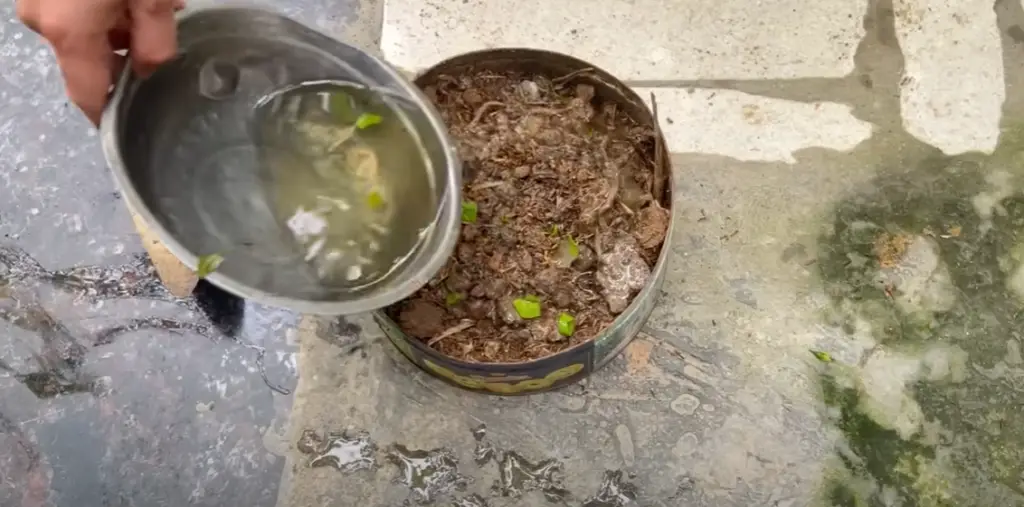
How To Fertilize Strawberries?
Fertilizing strawberries is an important part of keeping them healthy and producing sweet, juicy fruit. There are several different ways to fertilize your strawberry plants:
Method 1: Compost
Compost is an excellent source of organic fertilizer. It can be applied to the soil around the strawberry plants, providing nutrients and improving soil structure. Use a layer of compost about 1-2 inches thick, which should be replenished or replaced every year.
Method 2: Commercial Fertilizers
For those who prefer to use a commercial fertilizer, there are many formulations that are designed specifically for strawberry plants. These fertilizers usually contain nitrogen to help the plants grow and bloom, as well as phosphorus and potassium for better root development.
Method 3: Epsom Salt
Epsom salt is also an effective way to fertilize strawberries. It is high in magnesium which helps the plants produce strong and healthy foliage. Sprinkle a handful of Epsom salt each month around the base of your strawberry plants to give them an extra boost of nutrients.
Method 4: Coffee Grounds
Coffee grounds are also a good source of fertilizer for strawberry plants. They provide nitrogen, phosphorous, potassium, calcium and other minerals which can help promote healthy growth. Spread the grounds around the base of your strawberry plants and water them in.
Method 5: Manure
Another way to feed your strawberry plants is to use manure. Choose an organic, well-rotted manure such as a cow or horse, and spread it around the base of the plants in a layer about 3 inches thick. This should be done once or twice a year. [8]
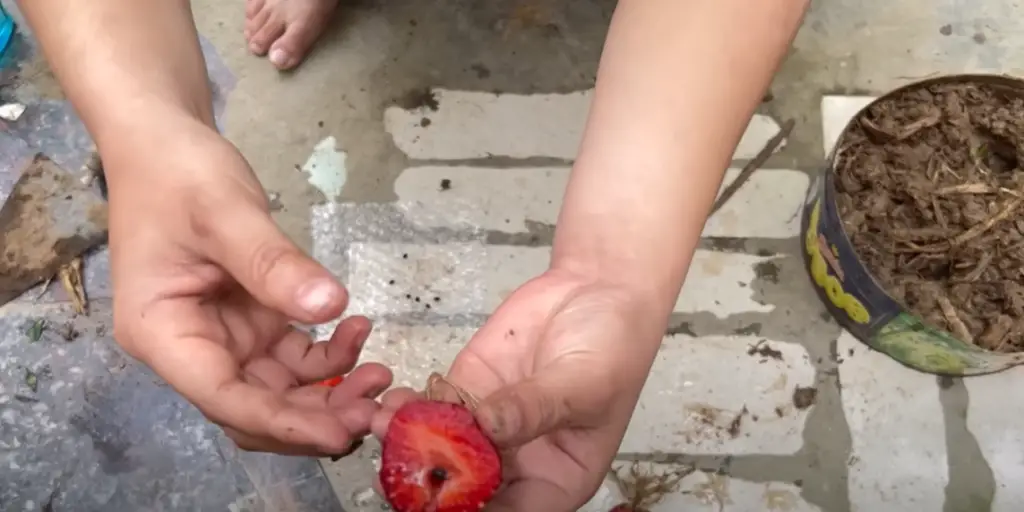
What Diseases Can Strawberries Get?
Strawberries are especially susceptible to certain diseases, including powdery mildew, anthracnose, botrytis, verticillium wilt, red stele, crown rot, and gray mold.
Powdery mildew
Powdery mildew is a fungal disease that appears as powdery white spots on the leaves and stems of strawberry plants. It is caused by a wide range of species from the family Erysiphaceae, including Sphaerotheca macularis, Oidium neolycopersici and Microsphaera alphitoides. Powdery mildew can spread quickly and cause significant damage to the strawberry plant.
Anthracnose
Anthracnose is a fungal disease caused by the fungus Colletotrichum acutatum. It infects the flowers, leaves, stems and fruit of strawberry plants producing small lesions that often ooze a reddish liquid. The infection can significantly reduce crop yields if left untreated.
Botrytis
Botrytis is a fungal disease caused by the fungus Botryotinia fuckeliana. It produces greyish-brown lesions on the leaves and stems of strawberry plants, as well as dark spots on the fruit. This type of infection often spreads quickly and can cause significant damage to the strawberry plant.
Verticillium wilt
Verticillium wilt is a fungal disease caused by the fungus Verticillium dahliae. It affects the leaves and stems of strawberry plants, causing them to yellow and wilt. The infection can spread quickly throughout the plant if left untreated, reducing crop yields significantly.
Red stele
Red stele is a fungal disease that affects the roots of strawberry plants, causing them to rot and die off. The fungus Phytophthora fragariae is responsible for this type of infection, which often results in poor growth and yield reduction if left untreated.
Crown rot
Crown rot is a fungal disease caused by the fungus Phytophthora cactorum. It affects the crowns of strawberry plants, causing them to decay and wilt. The infection can spread quickly throughout the plant if left untreated, reducing crop yields significantly.
Gray mold
Gray mold is a fungal disease caused by the fungus Botrytis cinerea. It produces grayish-brown spots on the leaves and stems of strawberry plants, as well as dark spots on the fruit. This type of infection can spread quickly and cause significant damage to the strawberry plant if left untreated.
In order to prevent diseases from affecting strawberries, it is important to practice good hygiene when handling them, such as washing them before eating and disposing of any contaminated or rotten fruit immediately. Additionally, it is crucial to keep the soil in which the strawberry plants are grown well aerated and free from weeds or other debris that can serve as hosts for fungal diseases. Regular monitoring of the plants should be carried out in order to detect any signs of infection early on, so that appropriate control measures can be taken.
Fungicides and bactericides can also be used to control diseases in strawberry plants. However, it is important to follow the instructions on the label carefully in order to ensure safe and effective use of these products. [9]
FAQs
What month is best to plant strawberries?
The best time to plant strawberries is in early spring, when the soil is well-drained and warm. Planting during late summer or autumn can also be beneficial, as this allows the plants more time to establish before winter arrives.
How long does it take to grow strawberries in Florida?
Strawberry growing in Florida is a rewarding and enjoyable experience. The amount of time it takes to grow strawberries in the sunshine state varies depending on a few factors, including the type of strawberry variety, soil fertility, temperature, water availability, and pest control practices.
Most varieties take approximately three months from planting to harvesting. That said, some early-bearing varieties may be ready in as little as two months. It’s important to keep in mind that the timing for each strawberry season will vary, so it’s important to pay close attention to the plants and adjust your harvesting schedule accordingly.
What climate do strawberries grow best in?
Strawberries are a hearty berry that can be grown in many climates around the world. However, they do best in temperate- to subtropical regions with mild winters and warm summers. In colder climates, strawberries can survive winter as long as the ground does not freeze too deep. Strawberries also require lots of sun and well-drained soil for optimal growth. To ensure good fruit production, strawberries should be planted in an area that receives at least 8 hours of direct sunlight each day. Additionally, the soil should be high in organic matter and have a pH level between 5.5 and 6.5 for best results.
Strawberries prefer cooler climates to those that are too hot and humid, as the latter can cause disease to set in more easily. In areas with extremely hot summers, it is a good idea to plant shade cloth over the strawberry plants during the hottest parts of the day. Additionally, applying a layer of organic mulch around the plants can help to retain moisture and protect them from extreme temperatures. Careful maintenance and fertilizing will also go a long way towards ensuring good fruit production in any climate.
What is the easiest fruit tree to grow in Florida?
Orange trees are one of the easiest fruit trees to grow in Florida. Orange trees thrive in the warm climate and require minimal care. With regular watering and fertilizing, orange trees typically produce a large crop within two to three years. Additionally, they are resistant to many common insects and diseases that can plague other fruit trees. The dense canopy of leaves provides natural shade for the fruit, allowing it to stay cooler and ripen more slowly. This makes them an ideal choice for those looking to add a fruit tree to their landscape in Florida.
Mango trees are also well-suited for growing in Florida. Known as one of the sweetest fruits, mangos are an incredibly popular choice with Floridians. Mangos prefer an area with full sun exposure, but can tolerate partial shade. They are known for their drought-tolerance, making them a great choice for areas with less rainfall. Mango trees grow quickly and will reach bearing age in three to four years. Proper care is essential for any fruit tree, and mangos require regular pruning and fertilizing to produce the best fruit.
Useful Video: Growing Strawberries In Florida – Best Times To Plant, Best Varieties And Other Tips
To Sum Up
Planting strawberries in Florida can be a great way to supplement your income and provide yourself with delicious snacks. But it is important to take the season into consideration when you are deciding when to plant. Winter is typically the best time to plant because temperatures are cooler and rain is plentiful, allowing for optimal growth. Doing so will ensure that you have an abundant crop of strawberries once spring and summer roll around. However, if you’re looking for a quicker harvest, consider planting some varieties during the late summer or early fall months, keeping in mind that this could result in an inferior crop due to heat stress and other potential issues. Lastly, don’t forget about mulching your strawberry plants! Mulch helps regulate the temperature of the soil which facilitates healthier plants and higher yields come harvest time.
References:
- https://www.bbcgoodfood.com/howto/guide/ingredient-focus-strawberries
- https://www.webmd.com/diet/health-benefits-strawberry
- https://www.floridayards.org/growing-strawberries-in-florida/
- https://www.rhs.org.uk/fruit/strawberries/grow-your-own
- https://thegardeningdad.com/best-strawberries-to-grow-in-florida/
- https://www.almanac.com/plant/strawberries
- https://www.lovethegarden.com/uk-en/growing-guide/how-grow-strawberries
- https://www.bhg.com/how-and-when-to-fertilize-strawberries-7555579
- https://www.allaboutgardening.com/strawberry-diseases/





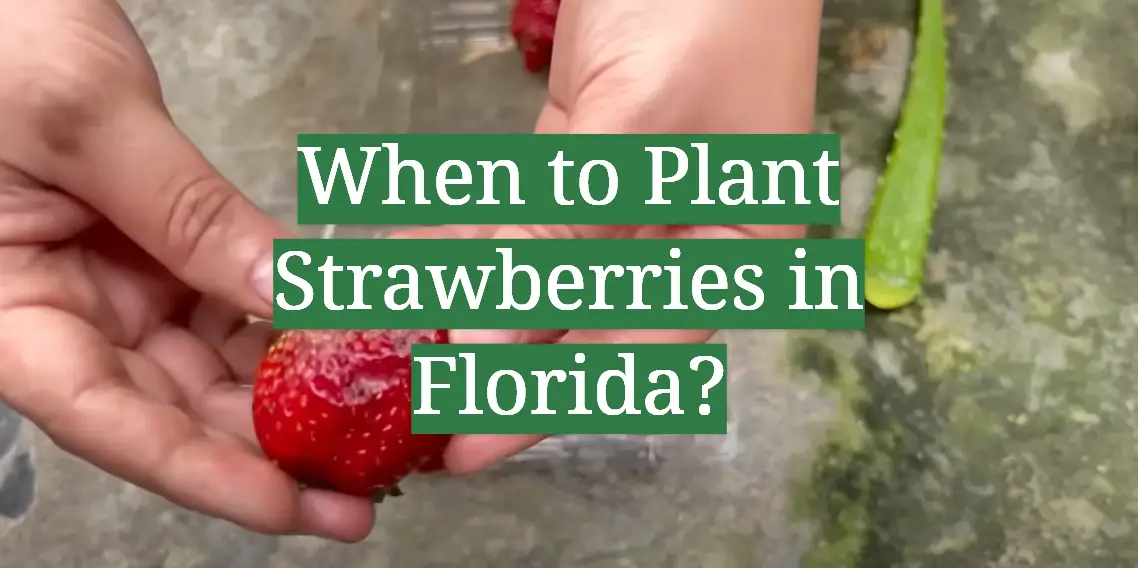



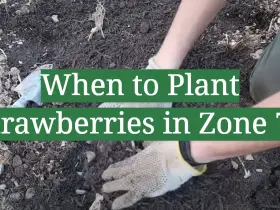
Leave a Reply
View Comments